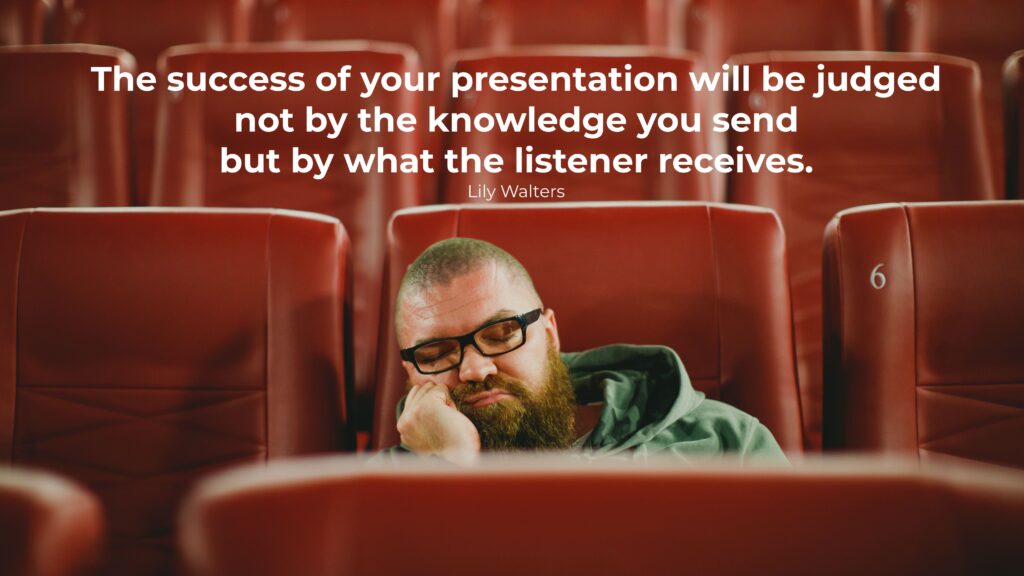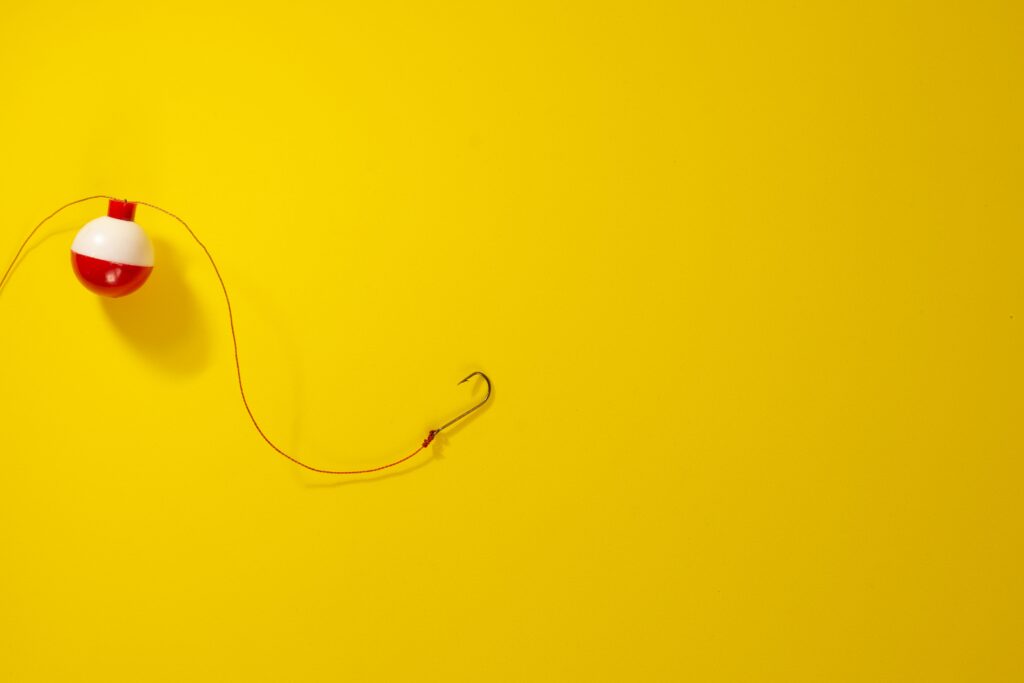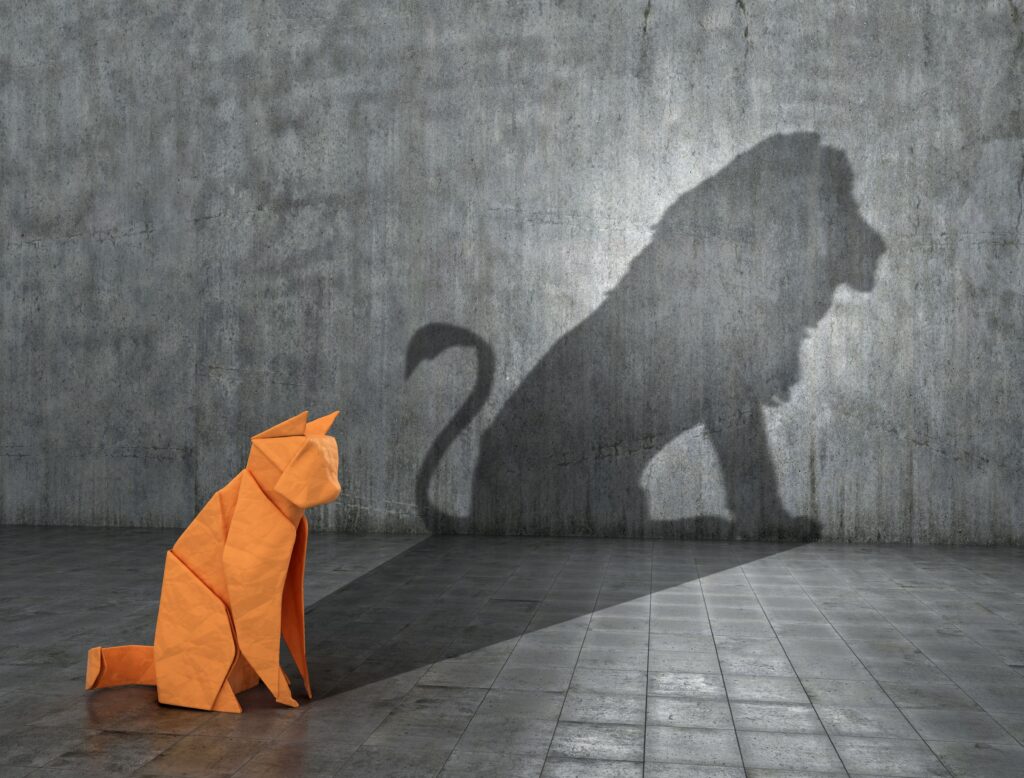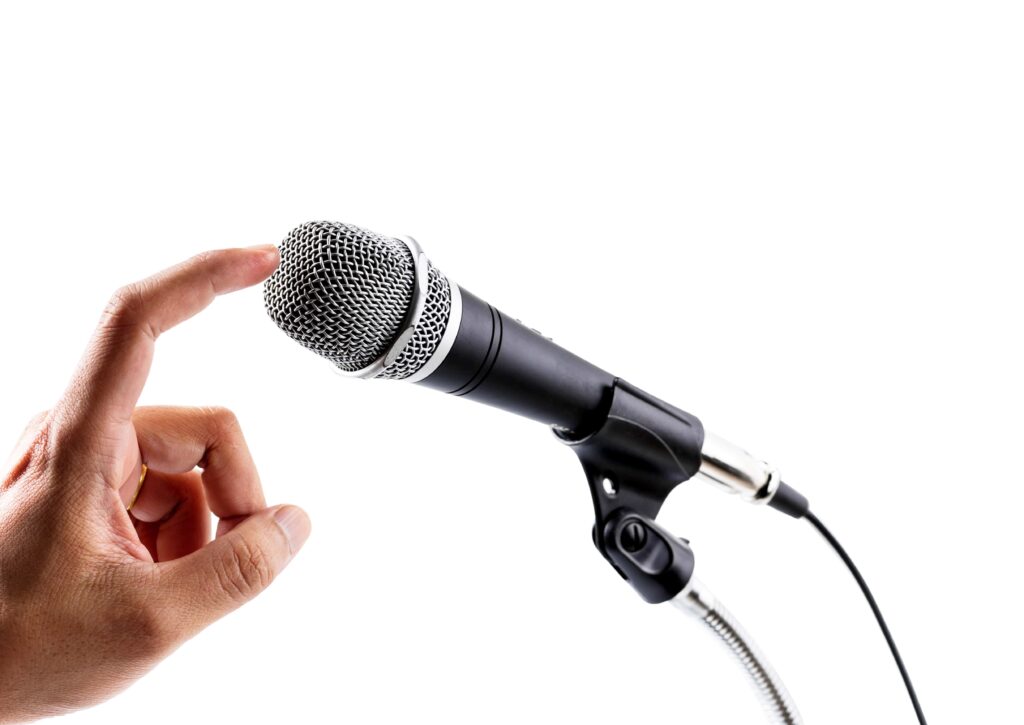In this Article...quick links
We all know how important it is to hook the audience in at the very start of the presentation. It only takes 30-60 seconds for your audience to decide whether they are interested in you and what you might have to say, and research tells us that the first 8 seconds are the most important. So, it’s critical that you use this time wisely and start with an impactful ‘attention grab’ in a presentation to draw them in.
The ‘attention grab’, also known as a “hook”, is a technique used to start the presentation. It’s almost always the very first thing the audience will see, hear or read and its aim is to immediately capture their interest. The catchier or more startling the hook the more effective it will be in engaging your listeners so that they want to learn more.
All too often though, people who deliver business presentations as a regular part of their professional role, assume that ‘attention grabs’ are only for TED Talkers, or for those on the corporate speaker circuit, or perhaps for thought leaders campaigning on big topics such as climate change.
We have a saying at SecondNature – there is no such thing as a dry, boring presentation. Just dry, boring presenters. So, we want to challenge this assumption and to encourage everyone to think about how they can include highly effective and impactful ‘attention grabs’ as part of their everyday presentations. But remember, the hook has to be relevant to the presentation topic. So no random images or jokes, otherwise that’s all that your audience will remember, instead of the actual point of the grab.
Different categories of Attention Grabs
We like to think of ‘attention grabs’ as visual, verbal and/or kinaesthetic.
VISUAL. This could include a startling statistic or graph, an amazing video, a dramatic image or photograph or perhaps a cartoon. It could also be a prop of some sort.
VERBAL: Examples include analogies or metaphors, or perhaps an anecdote, case study or a quote; by someone famous or perhaps a customer/client. You might even include humour, but only if it’s relevant.
KINAESTHETIC: This could take the form of audience involvement, perhaps with an open question to prompt discussion, or a closed question with a show of hands. It might be asking the audience to imagine a situation; positive or negative. It could even be a short exercise to complete.
Later we’ll share with you some ways to introduce an ‘attention grab’ in a range of everyday business presentation settings, but first let’s look at the 10 main types of ‘attention grabs’, or hooks, in more detail.
10 Attention grabbing ways to start your presentation
- Use a startling statistic or an arresting image
This is a simple way to generate an ‘attention grab’ if you are struggling to find a suitable hook. Research statistics on your industry to highlight the gravity of the topic you are about to cover. For example, a presentation about air pollution could start with “Over 100 million years of healthy life are lost every single year because of air pollution. That’s 1 year and 8 months of healthy life lost on average for every single person on Earth. It’s the world’s 4th most lethal killer.”
- Ask rhetorical questions
Starting with a rhetorical question forces the audience to engage with you immediately. You could ask a very specific rhetorical question such as ‘How on earth are we going to reach Net Zero by 2030?’. Other rhetorical questions can be broader and more thought-provoking e.g. ‘What do you think the world would like if the internet had never been invented?’ Either way, this tactic forces the audience to think and ponder the answers to the questions themselves and so draws them into the presentation.
- Be contrary
Start with a universally accepted concept and then contradict it. Let’s say you’re presenting to a sales team and the objective is to celebrate recent successes and to motivate the team going forward. The audience will expect you to begin with a congratulatory message, a winning statistic or an inspiring quote. Instead, you might start with a quote from your most disgruntled customer and reference these words from Bill Gates. “Your most unhappy customers are your greatest source of learning.” The idea here is to be provocative and surprising in order to grab the audience’s attention straight away.
- Get the audience to imagine a particular scenario
Ask the audience to close their eyes and imagine a particular scenario. Take them on an emotional journey and then surprise them with an image or fact. For a great example of this, watch Jane Chen’s TED talk on low-cost incubators designed for developing countries. She begins her presentation by saying “Please close your eyes and open your hands. Now imagine what you could place in your hands, an apple, maybe your wallet. Now open your eyes. What about a life?”
- Research this day in history
Google what has previously happened on the same day in history as your presentation and see if there is a relevant fact that you can weave into the narrative. For example, on this day of writing, in 1957, The British television broadcasters BBC and ITV ended a post-war policy in which there was no programming between 6:00 and 7:00 at night; known as the “toddler’s truce,” the break was designed to help parents put children to bed. In 2005, The Kyoto Protocol, an international treaty aimed at reducing the emission of gases that contribute to global warming, went into effect, and in 1838, the State of Kentucky in the U.S passed a law permitting women to attend school under certain conditions. Be creative and see if you can find a relevant and interesting historical event to kick-off your next presentation.
- Reference the news of the day
You’ve probably seen and heard other presenters do this. It is where the presenter uses a headline, or a news story, from the day of the presentation as a springboard for the rest of the presentation. It’s a very simple but extremely effective way of providing interesting context for the presentation, and so engaging the audience.
- Use Analogies and metaphors
These are both impactful ways to start a presentation with a hook or attention grab and can help to tell a story or set the scene. An analogy is a direct comparison between two things e.g. she is like a dog with a bone when it comes to new business leads; whereas a metaphor states that one thing is like another in order to create a symbolic link, even though they might not actually be related e.g. manufacturing costs are skyrocketing at the moment. Analogies and metaphors can often form the basis for really impactful images too. So a double win! For inspiration you can look at literature, presidential speeches or even the movies. Again, subject relevance is key.
- Use quotes
Quotes can be a serious, challenging or even funny and entertaining way to start a presentation. There are plenty of sources out there so it’s easy to search by category, and as with analogies/metaphors, if you combine it with a striking image then so much the better.
Here are just a few examples:
Leadership. “The first rule of leadership: everything is your fault” (Bug’s Life)
Motivational. “You don’t have to be great to start, but you have to start to be great” (Zig Ziglar)
Success. “Don’t wish it were easier. Wish you were better.” (Jim Rohn)
Failure. “Many of life’s failures are people who did not realise how close they were to success when they gave up” (Thomas A. Edison )
Humour. “You had me at ‘hello’” (Jerry Maguire)
If you can’t find an appropriate quote then try searching for an ancient Proverb that fits – one that the audience is less likely to be familiar with.
- Tell a story
At SecondNature, we talk a lot about storytelling and how to build a compelling narrative for your entire presentation. However, one of the most effective ‘attention grabs’ is to share a story with the audience at the start of a presentation. This might be a story or event that has happened to you. Or it could be a story about someone else. It shouldn’t be long. Just 15-60 seconds or so. As with all ‘attention grabs’ it should be relevant to the overall message.
- Audience participation
This is a great way to engage with the audience from the get go. Ask a question or state a goal and get the audience to vote – using a simple, show of hands – to show agreement or disagreement, Then, at various stages of the presentation, pose the same question again. This is a good way to gauge if views have changed during your speech. Before we share some practical examples of ‘attention grabs’ for everyday business presentations we thought you might like to know of some things to avoid at the start of a presentation.
How NOT to start a presentation
Just as we’ve outlined why you need to kick off with a hook or an attention grab in a presentation, there are also some definite ‘No Nos’ that are guaranteed to put the audience either to sleep, or turn them off before you even start. You have probably even witnessed some of them yourself. So, here’s a quick rundown of the top 5 worst things you can say at the start of your presentation.
- I’m sorry, but I’m not familiar with this technology so bear with me.
- Can you hear me? And don’t even think about tapping the microphone!
- There’s a lot to get through so I’ll go as quickly as I can.
- I’ll try to keep this short as I don’t want to bore you.
- Let me tell you something about me.
Needless to say, if you know your audience, have prepared well, created a compelling narrative to accompany your slides and rehearsed properly, then none of the above should be an issue.
Examples of ‘attention grabs’ for everyday business presentations
The following examples are simple thought starters to help you get creative with your ‘attention grabs’.
A discussion about Diversity & Inclusion to a team – audience involvement, ask people to raise their hand if they have ever felt excluded at any time in their life. Then ask people to imagine feeling like that all the time.
Presentation about Health & Well Being to a department – a news article describing the rates and impacts of mental illness.
Sales Update – a manager to his/her team: Use a quote from a happy customer to celebrate success over the past period. Or one from an unhappy customer to galvanise the team for the next sales period.
Weekly catch up with team members – a personal story that highlights the extra effort someone made over the past week.
Work-In-Progress meeting with a client – a statistic highlighting the number of projects completed, on time and on budget, over the past year.
All-Hands presentation to staff – a graph showing positive results for the year to recognise the hard work of those across the organisation.
Contract renewal meeting with a customer – a table highlighting 3-5 critical KPIs that have been met over the period of the previous contact term.
Office etiquette presentation with members of staff – a photograph showing a messy shared kitchen.
Activation presentation for example, a presentation to encourage team members to adopt better recycling habits – a video showing all the plastic in our oceans.
A meeting with a client to discuss an additional business opportunity – a case study of working with a similar client to deliver a similar project, and the benefits it achieved.
Monthly team meeting – bring a prop e.g., a magnifying glass to remind the team to keep paying attention to the detail; a paper whistle to remind them to celebrate their successes, a pile of monopoly money as a reminder to keep control of costs, a hard hat to reinforce you want the team to stay safe over the upcoming holiday period. It could also be as simple as a cake to say thank you.
So go on! Challenge yourself to include an ‘attention grab’ at the start of your next business presentation. But make sure it’s relevant and appropriate – to the audience and to the subject matter. Remember the key is to build rapport and get the audience on your side.
Improve your presentation style and techniques through training or 1-to-1 coaching
If you’re looking for help on how to improve your presentation skills, for yourself, or your team, our personalised training or coaching that is tailored to your business, is just what you’re looking for!
For nearly 20 years we have been the Business Presentation Skills Experts, training & coaching thousands of people in an A-Z of global blue-chip organisations – check out what they say about our programmes.
To find out more, click on one of the buttons below:

Belinda is the Co-Founder and Managing Director of SecondNature International. With a determination to drive a paradigm shift in the delivery of presentation skills training both In-Person and Online, she is a strong advocate of a more personal and sustainable presentation skills training methodology.
Belinda believes that people don’t have to change who they are to be the presenter they want to be. So she developed a coaching approach that harnesses people’s unique personality to build their own authentic presentation style and personal brand.
She has helped to transform the presentation skills of people around the world in an A-Z of organisations including Amazon, BBC, Brother, BT, CocaCola, DHL, EE, ESRI, IpsosMORI, Heineken, MARS Inc., Moody’s, Moonpig, Nationwide, Pfizer, Publicis Groupe, Roche, Savills, Triumph and Walmart – to name just a few.





